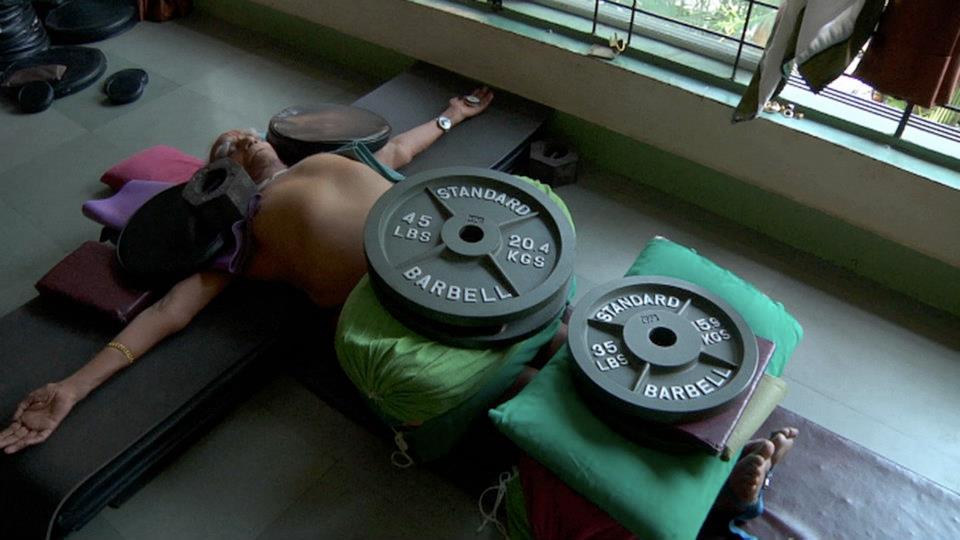The classes I teach vary significantly from week to week. Sometimes they are dynamic and fast-paced, other times they are intentionally methodical and introspective, and once a month, as is typical in the Iyengar Yoga tradition, I teach a ’restorative practice’.
Interestingly, more so than any other classes, restorative week evokes the strongest response from students. I have students who absolutely love it and students who (conveniently?) never show up. What is it about the restorative practice that garners such extreme responses?
But First, a Confession…
When I started practicing yoga, I did not enjoy restorative classes. My back was often bothered by the positions and the pain distracted me from turning my focus inward. Also, my mind was all over the place. Focusing on my breath in these supine poses was more challenging than a class full of standing poses! That said, I trusted that restorative poses had something to offer. I felt I should endure the discomfort so that I could ultimately reap the benefits.
In the beginning, this do-it-anyway attitude served me well. Despite the challenges, I learned something. Every so often, I’d even encounter a smooth breath. Although fleeting, I experienced a sense of quietude that was also delightfully engaging, and these glimpses motivated me to practice further.
As time passed and I made clear progress in my asana practice, my restorative practice remained a struggle. It came to a point where I could predictably expect a headache and an incredible sense of anxiety as a direct result.
My do-it-anyway attitude no longer felt like the right approach…but what was? At a loss for how best to proceed, I consulted my teacher, Senior Iyengar Yoga Teacher, Marlene Mawhinney. She explained that as you do more and more yoga, often, you become increasingly sensitive. I remember thinking that ‘progressing’ in Yoga was like a double-edged sword. On the one hand you become more conscious, but on the other hand, it’s that same consciousness that makes you sensitive to aches, pains, or disturbances that otherwise you may not have noticed. This seemed to encapsulate what was happening for me.

What Makes a Restorative Practice, Restorative?
The term ‘restorative’ is confusing. I mean, isn’t all yoga ultimately meant to restore? When I think of feeling restored, I imagine a clear mind and a calm state of being. Even if the practice that is classically considered ‘restorative’ tends to agitate my nervous system, there are many asanas that reliably still the fluctuations of my mind.
For example, if I need to steady myself, I can always count on Sirsasana (headstand) to deliver. When I need to calm myself, Ardha Halasana (half plough pose) has never failed me.
Granted, all poses are not restorative at all times, but if I’m in tune with my body, mind, and practice, I can always find ways to restore. The key though is being receptive enough to understand the impact of the asanas.
In Spite of Myself, I Learned…
Despite the ups and downs, I’ve had with restorative poses and more recently with pranayama, I’ve learned some important lessons:
1. Restorative practice is a practice.
While it may not come easily at first, with dedication the mind can be trained to focus and the body can be trained to surrender.
2. Whether I struggle or adore a particular sequence, it’s always fruitful to explore the why.
What is the nature of my personality? How might this sequence be pacifying or agitating that nature? Am I engaging with the practice in a healthy, honest, and meaningful way? I found these questions constructive for deciding when the do-it-anyway attitude can be helpful or harmful.

3. Restorative and dynamic approaches to practice can be mutually reinforcing.
BKS Iyengar taught us that it’s not uncommon for your experience of an asana to vary from side to side. He would say that if a pose or a particular action comes easily for you on your left side, let your left side teach your right side how to do it. Essentially, your ‘good’ side can give you a taste for the correct action and then on the ‘bad’ side, you can better seek out that same feeling. Similarly, there’s a relationship between a restorative approach and an active one. This was a big lesson for me. I often reflected on these two questions:
- How can I take the quality of mind and breath from my restorative practice and bring it to the poses I toil with, in an active one? and,
- How can I bring that element of vibrancy that comes more easily for me in the active poses to my restorative practice?
4. What is restorative for one, may not be restorative for others.
For me, inversions and supported backbends will restore me infinitely more effectively than any other asanas. Discovering this, however, was a process. In hindsight, I’m nothing but grateful for the struggle because it ultimately taught me how to personalize my practice. It also gave me the confidence I needed to trust that if something doesn’t feel right, it probably isn’t.
When I teach, I very often find that the students who need restorative poses the most avoid them like the plague. Similarly, students who could be well served by a dynamic, active practice are the first ones to reach for a bolster.
I hope that by sharing my personal story, the veil of a one-size-fits-all approach is lifted. We all deserve the privilege of a practice that responds to our personal needs and circumstances. Practically speaking, this may mean doing asanas that you don’t like, or it may mean acknowledging that muscling through (aka gritting your teeth and bearing it) is not appropriate. Ultimately, only you can decide what path to take, but I hope my experience helps to convey that the journey of Yoga can offer tremendous gifts as you work to figure all this out 🙂

Illustration by Valeria Ko.
Enjoyed reading this article? Consider supporting us on Patreon or making a one-time donation. As little as $2 will allow us to publish many more amazing articles about yoga and mindfulness.





